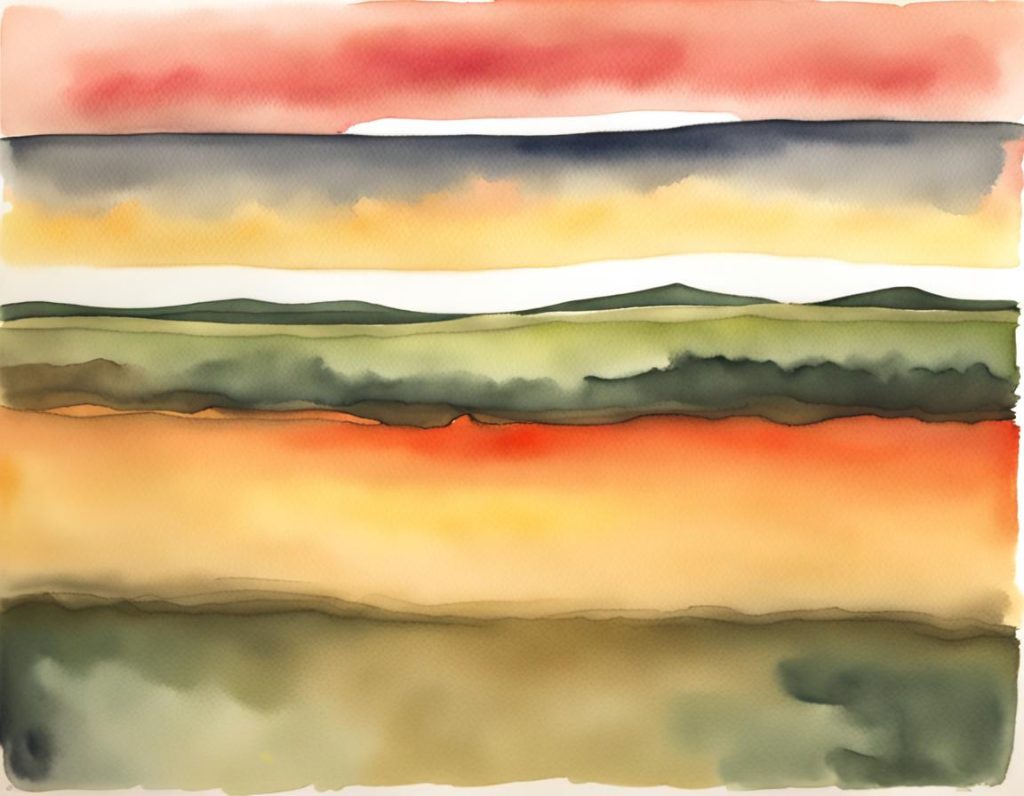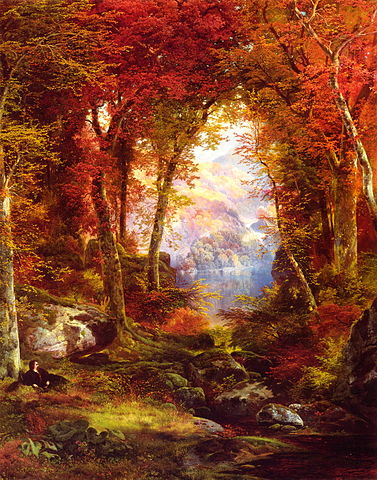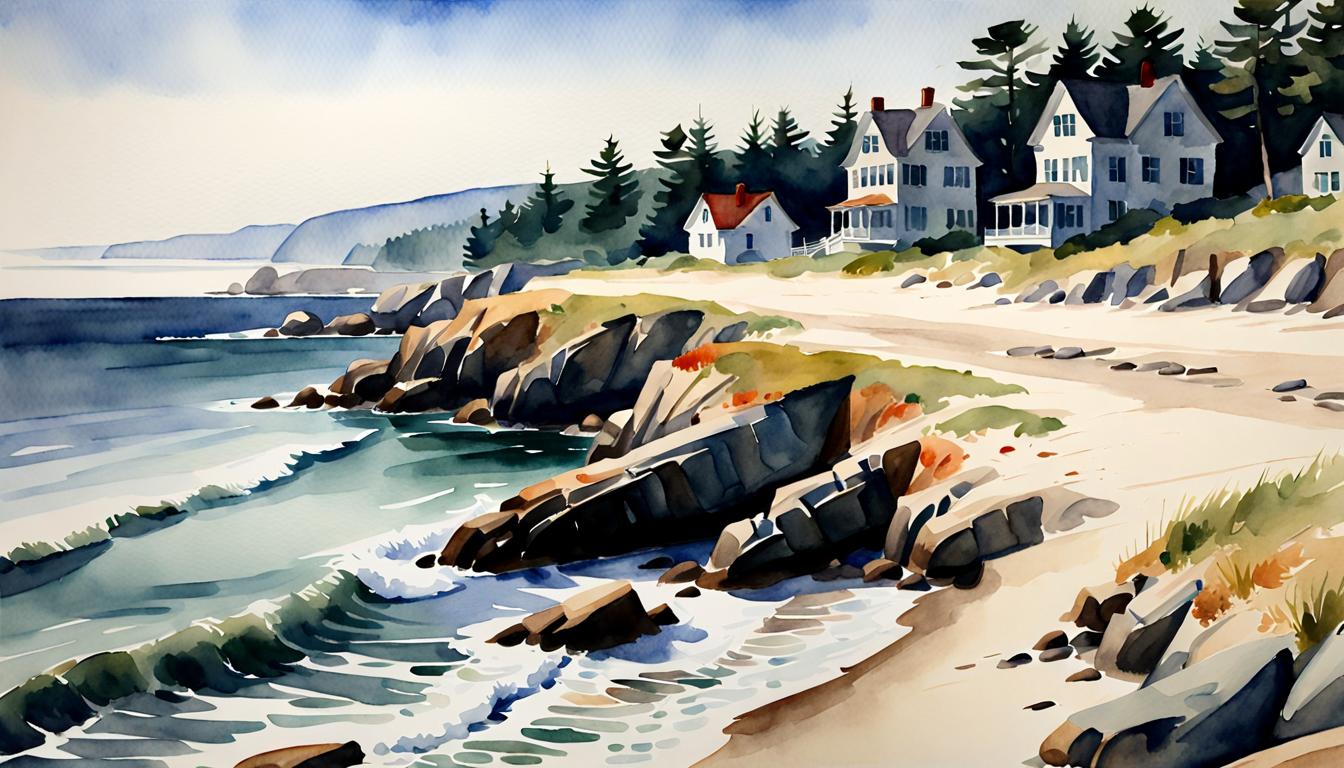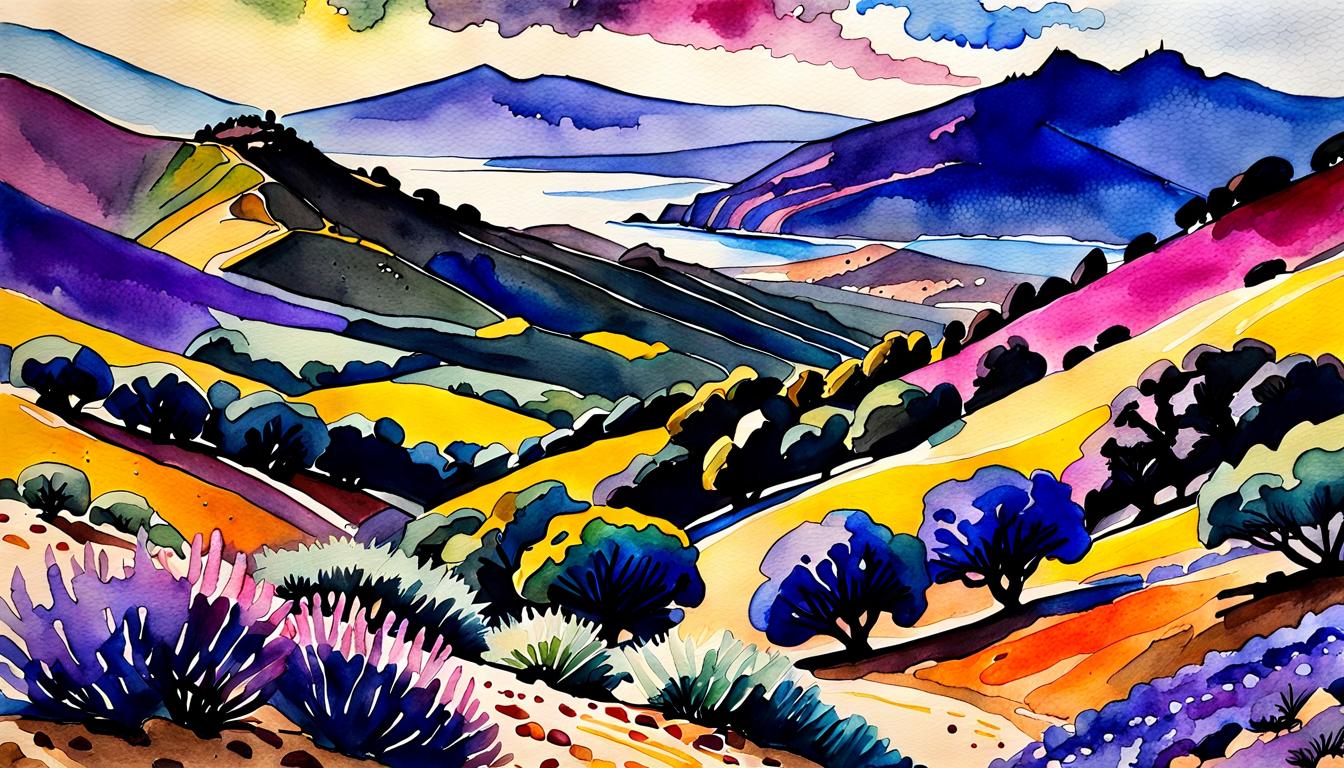
In this article, we will explore the mastery of color and emotional depth found in Mark Rothko’s watercolor paintings, and how they continue to captivate artists and art enthusiasts around the world. Mark Rothko, a renowned American artist of Latvian-Jewish descent, is widely celebrated for his iconic abstract paintings. While Rothko is best known for his large-scale oil paintings, his watercolor works are equally mesmerizing and deserve closer examination.
Development of Mark Rothko’s Watercolors
Before delving into the brilliance of Rothko’s watercolor masterpieces, it is important to understand the artist himself. Born Marcus Rothkowitz on September 25, 1903, in Dvinsk, Russia (now Daugavpils, Latvia), Mark Rothko immigrated to the United States in his early teens. He eventually settled in New York City, where he became a prominent figure in the Abstract Expressionist movement.
While Rothko is primarily associated with his signature oil paintings, he explored various mediums throughout his career, including watercolor. Watercolor offers a unique set of challenges and opportunities for artists, as it requires a delicate balance of technique, spontaneity, and mastery over the often unpredictable nature of the medium.
Rothko’s experimentation with watercolor allowed him to explore new ways of expressing his artistic vision. The transparency and fluidity of the medium enabled him to create ethereal and evocative compositions that beautifully showcase his mastery of color and emotion.
Watercolor Masterpieces: Personal Connections
One of the notable aspects of Rothko’s watercolor paintings is their ability to evoke profound emotions in viewers. Rothko believed that art should connect with the viewer on a visceral level, transcending the limitations of language and intellect. His watercolor masterpieces achieve precisely that, with their ethereal washes of color and subtle gradations.
Large is Good!
Rothko’s watercolor works often feature large, floating fields of color that seem to hover and pulse with raw emotions. The lack of defined shapes or discernible subject matter allows the viewer to experience a pure and unfiltered emotional response. The softness and translucency of watercolor pigments further add to the emotive quality of the paintings.
Unlike his oil paintings, which are known for their monumental size, Rothko’s watercolor pieces are relatively smaller in scale. This intimate format enhances the sense of personal connection and invites viewers to engage with the artwork on an individual level. The small size also allows for a concentrated exploration of color relationships and tonal variations.
Rothko Paintings Showcase
Rothko’s watercolor paintings showcase his deep understanding of color theory and his skillful manipulation of pigments. Each composition is carefully crafted to elicit a specific emotional response, with harmonious or contrasting colors playing a crucial role in creating the desired impact.

Despite their seemingly simple appearance, Rothko’s watercolor paintings are imbued with complexity and depth. Layers of translucent color build upon one another, creating a sense of depth and luminosity. The interplay between light and dark hues adds dimensionality to the compositions, while subtle variations in saturation and intensity allow for subtle shifts in mood and atmosphere.
Rothko was highly attuned to the psychological and emotional effects of color. He believed that certain hues could evoke specific emotions and sought to harness this power in his artwork. By carefully selecting and juxtaposing colors, he was able to create a profound and immersive visual experience that transcends the limits of representation.
Many of Rothko’s watercolor paintings feature a limited color palette, often restricted to a few hues or even monochromatic compositions. This deliberate choice allows for a focused exploration of color relationships and intensifies the emotional impact of the artwork. By stripping away extraneous details, Rothko invites viewers to immerse themselves in the pure essence of color.
Rothko’s watercolor paintings continue to inspire and influence artists today. His mastery of color and ability to convey profound emotions through simple yet evocative compositions serve as a testament to his artistic brilliance. Artists who study Rothko’s watercolor works can learn valuable lessons about the power of color, emotional expression, and the importance of personal connection in art.
Artists Inspired by Mark Rothko’s Paintings
Mark Rothko was one of the most influential artists of the 20th century, and his work has inspired countless artists since. His abstract paintings, characterized by their large scale, vibrant colors, and atmospheric qualities, have been praised for their ability to evoke a sense of spirituality, transcendence, and emotion.
Some of the most notable artists inspired by Mark Rothko include Agnes Martin, Anish Kapoor, Gerhard Richter, Sam Gilliam, Sheila Hicks, Shirazeh Houshiary, and Byron Kim. These artists have drawn inspiration from Rothko’s use of color, light, scale, and form to create their own unique and innovative works of art.
Rothko’s legacy continues to influence artists today, and his work is still widely admired and celebrated by art lovers around the world.
Galleries Featuring Mark Rothko
| Title | Description | Gallery |
|---|---|---|
| No. 10 (1950) | A large, abstract watercolor painting with a deep blue background and two large, vertical shapes in the center, one red and one orange. The shapes are not clearly defined, but they appear to be floating in space. | Tate Modern, London |
| The Yellow Band (1950) | A smaller, more delicate watercolor painting with a yellow band running across the top of the canvas. The band is surrounded by washes of blue and green, and there are a few small red and orange shapes in the bottom of the painting. | Metropolitan Museum of Art, New York |
| Untitled (1951) | A large, abstract watercolor painting with a dark red background and a few lighter red and orange shapes in the center. The shapes are not clearly defined, but they appear to be floating in space. | Hirshhorn Museum and Sculpture Garden, Washington, D.C. |
| Untitled (1952) | A smaller, more delicate watercolor painting with a light blue background and a few darker blue shapes in the center. The shapes are not clearly defined, but they appear to be floating in space. | Museum of Modern Art, New York |
| Untitled (1953) | A large, abstract watercolor painting with a dark brown background and a few lighter brown and orange shapes in the center. The shapes are not clearly defined, but they appear to be floating in space. | Art Institute of Chicago |
| Black and Blue (1954) | A smaller, more delicate watercolor painting with a black background and a few blue shapes in the center. The shapes are not clearly defined, but they appear to be floating in space. | National Gallery of Art, Washington, D.C. |
| Untitled (1955) | A large, abstract watercolor painting with a dark purple background and a few lighter purple and orange shapes in the center. The shapes are not clearly defined, but they appear to be floating in space. | Los Angeles County Museum of Art |
| Untitled (1956) | A smaller, more delicate watercolor painting with a light green background and a few darker green shapes in the center. The shapes are not clearly defined, but they appear to be floating in space. | Philadelphia Museum of Art |
| Untitled (1957) | A large, abstract watercolor painting with a dark gray background and a few lighter gray and orange shapes in the center. The shapes are not clearly defined, but they appear to be floating in space. | Guggenheim Museum, New York |
| Untitled (1958) | A smaller, more delicate watercolor painting with a light pink background and a few darker pink shapes in the center. The shapes are not clearly defined, but they appear to be floating in space. | Whitney Museum of American Art, New York |
Mark Rothko’s watercolor paintings are undoubtedly a masterpiece of color and emotion. Through his skillful use of the medium, Rothko created artworks that transcend representation and allow viewers to experience a pure and visceral connection. The ethereal washes of color, subtle tonal variations, and deliberate choice of hues all contribute to the emotional depth and impact of his watercolor works. As artists, we can learn from Rothko’s exploration of color and his ability to evoke profound emotions in viewers. By studying his watercolor masterpieces, we gain insight into the power of expression and the limitless possibilities of artistic experimentation.
FAQ
Q1: Where can I view Mark Rothko’s watercolor paintings?
A1: Mark Rothko’s watercolor paintings can be found in various art institutions and galleries worldwide. Some notable collections include the Museum of Modern Art in New York, the Tate Modern in London, and the National Gallery of Art in Washington, D.C.
Q2: What is the significance of the color blocks in Rothko’s watercolor paintings?
A2: The color blocks in Rothko’s watercolor paintings are a central element of his artistic expression. He believed that color had the ability to convey emotions and create a spiritual experience for the viewer. By using vibrant and contrasting hues, he aimed to evoke a range of emotions and invite contemplation.
Q3: How did Rothko approach the use of color in his watercolor paintings?
A3: Rothko approached color in his watercolor paintings with a deep understanding of its psychological and emotional impact. He believed that color had its own language and that it could communicate on a profound level. He carefully selected and arranged colors to create harmonious compositions that resonated with the viewer.
Q4: What emotions did Rothko intend to convey through his watercolor paintings?
A4: Rothko intended to evoke a wide range of emotions through his watercolor paintings. He aimed to create a sense of awe, reverence, and transcendence. His works often elicit feelings of wonder, introspection, and a connection to something greater than oneself.
Q5: How did Rothko’s watercolor technique contribute to the emotional impact of his paintings?
A5: Rothko’s experimental and intuitive approach to watercolor painting allowed for a sense of spontaneity and fluidity in his works. By wetting the paper before applying the paint, he created unpredictable and organic color interactions. This added to the emotional impact of his paintings, as it created a sense of depth and movement within the compositions.


